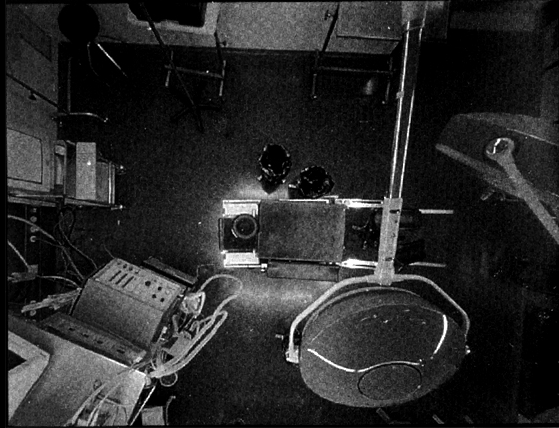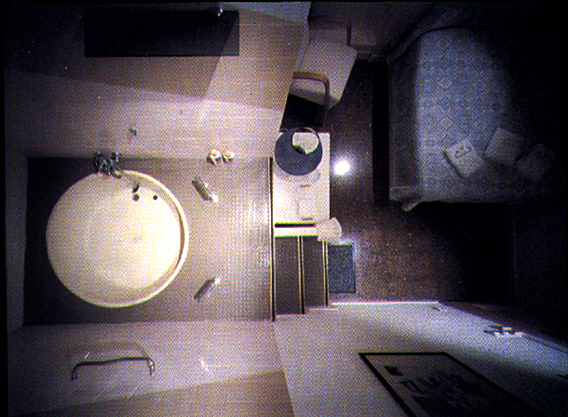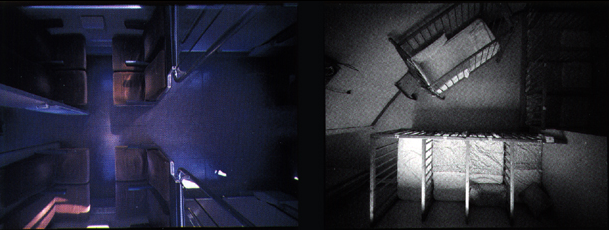De l'espai
He met Joan through Tere; Although before I had seen some of his images reproduced in the catalog of a collective exhibition. Three photographs, specifically, and the three of the interior of a space different from the kitchen and the room of a house - probably of its own - and the central nave of a chapel. Nothing to see among the three. If it were not because the point of view from which they were made was located in an unusual place. But it was not until last summer when they were seen for the first time. Both of us. On the terrace of a restaurant, three months ago. And they had never seen before, at that moment they were waiting ... under a sun of justice ... when they began to speak. Although none of them did not know exactly what he wanted from each other. Maybe because they did not want anything. Maybe because they did not expect anything either. At least, they were finding: one with the intention of knowing Juan's work, and the other, in order to discover why they were interesting for him; rather, because they were interesting for the photographs I had made. And it was when he spent these first moments of uncertainty - in which words are in danger of evaporating - that they continued their conversation.
When they saw on that occasion, Joan taught him some of his works: different photographs of spaces and hollow spaces. Only Without anyone But from interior spaces; because where there is no obligation of a human presence, one can not speak of what is empty in the strictest sense (or can we say that a desert is empty?). Of places that expressed in his silence the murmur of a life that had been, what could be, that he was not or could return. Because it was one of those places where any person, life, could reappear at any time. Or appear for the first time. In order to reuse all those elements that were on stage. From our everyday life. And, consequently, sitting on the chairs that could be seen, looking through their windows, opening any of the doors closed, going through some of their corridors, leaving something on top of a table ... In short , live in the interior of any of these spaces ... silent, silent, or silent. Because there was no one to remind them of their noise. And he went to see them before him when he experienced what he had forgotten: the intermediate phase of those relaxation exercises he had done for a few years. But he thought it was better to let him run. For a moment or forever.
Because what happened most were the points of view of those images. Once more. The place from which they were made. Because it was not one of those places where it can be accessed with absolute ease. Neither is it any of those places where one is located if it is not to fulfill a function, very determined. For example, watch out: watch. The look of someone who watches us and sees us; What do you expect (because waiting is the most eye-catching action). This is the feeling that Juan's photographs were transmitted: photographs taken from interior spaces looking for an eye that did not correspond to anyone's. Of any of us Maybe because it was only the eye of a machine (<< from a mathematical-geometrical eye of the line >>, he later told him). Looking at and showing the interior of these places in the purest nakedness. And from a hypothetical third position. That is, from above; that is, neither from the outside nor from within, but from the one where the one that watches us is hidden - that one who looks at us waiting for something to happen at some point. If we think - or believe - that there is always someone watching us ... while we act freely in the theater of the world. Of ours And in any of its scenarios: either wherever we meet and / or meet (people): known as the places of movement; in the spaces of a staging or of an action, at least, virtual; In the spaces that identify each one of its inhabitants (the interior of our houses, the stores where we will buy, the meditation centers where we go, if we want), or in the spaces of the traveler, of the individualized subject (the non-places): transit areas or temporary occupations. The spaces constituted to meet the purpose of the traveler and the relationship that, in this action of traveling, the subject maintains with each one of the spaces. Of those spaces where what is lived is nothing other than the experience of loneliness. From that solitude that usually gets rid of us when we feel ourselves observed by someone we do not see. Because we do not know where it is nor, consequently, who it is. And in parallel to the crushed ones of these images, of other photos in contrapicado. Precipiting our gaze, while waiting, in vacuum: from the ceiling of one of the spaces where the emptiness breathes. I live.
This is how all those places were recorded in the memory. Or the memory of each of those spaces after the meeting they held. And as if the bindings of a secret movie were, they were repeated as time went by. Because seeing them in the same way as John had taught him in the images of those spaces, an action was frozen. Between a before and a later one. Between what is inside or what is outside. What John had already done - because that is how he had lived - to leave the trace of his body on the surface of the eyes. One room; of an exhibition hall. Although this time it was limited to teach us how space was. Without him The place. Without anyone Because it is in each of these places where his life passes. Almost like everyone else's.
And what should be the interest of showing their interiors in the limits of a large room that at the same time would be empty?
And it was with the reverberation of this question in the head as they were finding the other times. Both John and himself. Because they had to come to imagine what the weight of loneliness was. Because it is when you find yourself in the interior of an empty space, almost inanimate, when our solitude acquires the greatest virulence. When there is no one who helps us to understand that we are not alone at heart. And as they began to discern the different images: from the places; of the different spaces and hollow spaces. Only and, therefore, without anyone. In order to get to confront us with the meaning of our actions. Perhaps also our most instinctive acts. Of those who tend to go down the paths, from our penumbra. Of life If it is, you can say that they have one. Or because, in the end, they always make sense.







